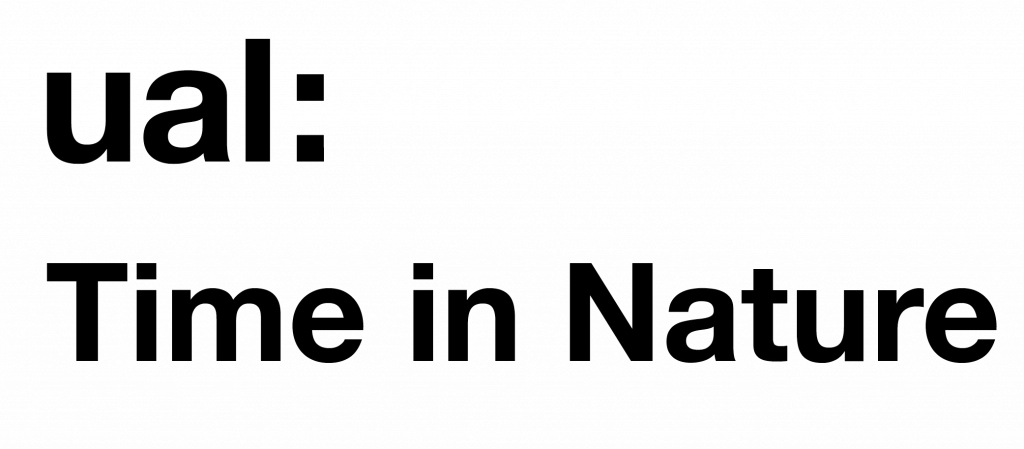Learning in/with/for Nature #2
A staff development activity to explore how we can learn in, with, and for nature. Designed for UAL teaching staff the training introduced different approaches to connecting with the senses, thinking about natural spaces as outdoor classrooms and as sources for creative engagement and critical discussion.

Key information
- Participants: educators, designed for up to 20 participants (with the possibility to scale).
- Duration: 3 hours.
- Location: 3 different locations within Hampstead Heath, starting at the viewpoint on Parliament Hill. Methods can be transferred to other locations.
IN nature
The session started by taking time to slow down and take in their surroundings. From the top of Parliament Hill, looking out over the London cityscape, participants were invited to observe the horizon and trace the shapes with their eyes. They were then asked to tune into their other senses (sound, touch, smell) and share their observations with another participant. Moving to an enclosed wooded area, participants drew the viewpoints from memory, visualising their multi-sensory observations. Drawings were hung in a makeshift gallery (a string tied between two trees) and a woodland critique followed, discussing the different approaches taken and the resulting drawings.





“I would consider implementing site-situated teaching methods that are driven by sensory experiences, empathy and critically informed care for nature. The relevance of these methods is my takeaway from the session.”
WITH nature
Working with nature as a co-teacher rather than purely a backdrop, participants explored how their subject areas could be re-imagined through textures, rhythms, and patterns found outdoors. Working in small, multi-disciplinary groups, participants were asked to design short, sensory-based “micro-lessons” in just ten minutes, before sharing them with the rest of the group. This fast-paced structure encouraged experimentation without overthinking, prompting educators to test out simple yet powerful interventions where nature served as an active collaborator. The process revealed how quickly new teaching ideas can emerge when disciplines intersect and when natural spaces are treated as co-designers in the learning process.







“’Hybrid vigour’ and ‘Attunement’ are useful starting points for learning from natural resources. It was helpful to remember to allow more time to attune to a place, and to separate the noticing/attuning from asking students to start tasks. Nature as a conduit to communicating across disciplines.”
FOR nature
The final part of the session focused on what it means to teach for nature, inviting participants to reflect on their relationship with the natural world and the responsibilities that come when drawing on nature in their teaching practice.
Seated in a circle of tree trunks, participants reflected on the samples they had collected during the session, considering the ethical questions raised by the natural ‘resource’ in their hand. Samples were placed together on a cloth creating a shared archive, prompting an open discussion facilitated by a “nature mic”. To close, participants made individual pledges to nature, considering issues of care, reciprocity and values as educators




“It made me realise that the activities don’t need to be big or overly complicated – when the facilitator said she just did tutorials outside that made me realise how simple it could be”
Considerations to be aware of:
- Time of year / season (prepare for different weather).
- Choice of route for accessibility and comfort. It is good to map out distance covered, height of elevation to be walked and proximity of facilities such as toilets and transport hubs.

Leave a Reply